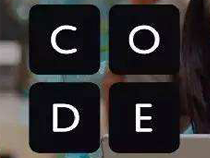将labelme格式数据转化为标准的coco数据集格式方式
更新时间:2020年02月17日 15:26:40 作者:i_linda
今天小编就为大家分享一篇将labelme格式数据转化为标准的coco数据集格式方式,具有很好的参考价值,希望对大家有所帮助。一起跟随小编过来看看吧
labelme标注图像生成的json格式:
{
"version": "3.11.2",
"flags": {},
"shapes": [# 每个对象的形状
{ # 第一个对象
"label": "malignant",
"line_color": null,
"fill_color": null,
"points": [# 边缘是由点构成,将这些点连在一起就是对象的边缘多边形
[
371, # 第一个点 x 坐标
257 # 第一个点 y 坐标
],
...
[
412,
255
]
],
"shape_type": "polygon" # 形状类型:多边形
},
{
"label": "malignant", # 第一个对象的标签
"line_color": null,
"fill_color": null,
"points": [# 第二个对象
[
522,
274
],
...
[
561,
303
]
],
"shape_type": "polygon"
},
{
"label": "malignant", # 第二个对象的标签
"line_color": null,
"fill_color": null,
"imagePath": "../../val2017/000001.jpg", # 原始图片的路径
"imageData":"something too long ",# 原图像数据 通过该字段可以解析出原图像数据
"imageHeight": 768,
"imageWidth": 1024
}
coco标准数据集格式:
COCO通过大量使用Amazon Mechanical Turk来收集数据。COCO数据集现在有3种标注类型:object instances(目标实例), object keypoints(目标上的关键点), and image captions(看图说话),使用JSON文件存储。
基本的JSON结构体类型
这3种类型共享下面所列的基本类型,包括image、categories、annotation类型。
Images类型:
"images": [
{
"height": 768,
"width": 1024,
"id": 1, #图片id
"file_name": "000002.jpg"
}
]
categories类型:
"categories": [
{
"supercategory": "Cancer", #父类
"id": 1, #标签类别id,0表示背景
"name": "benign" #子类
},
{
"supercategory": "Cancer",
"id": 2,
"name": "malignant"
}
],
annotations类型:
"annotations": [
{
"segmentation": [#坐标点的坐标值
[
418,
256,
391,
293,
406,
323,
432,
340,
452,
329,
458,
311,
458,
286,
455,
277,
439,
264,
418,
293,
391,
256
]
],
"iscrowd": 0, #单个的对象(iscrowd=0)可能需要多个polygon来表示
"image_id": 1, #和image的id保持一致
"bbox": [ #标注的边框值 bbox是将segmentation包起来的水平矩形
391.0,
256.0,
67.0,
84.0
],
"area": 5628.0, #标注的边框面积
"category_id": 1, #所属类别id
"id": 1 #标注边框的id : 1,2,3...,n
}
]
labelme 转化为coco
# -*- coding:utf-8 -*-
# !/usr/bin/env python
import argparse
import json
import matplotlib.pyplot as plt
import skimage.io as io
import cv2
from labelme import utils
import numpy as np
import glob
import PIL.Image
class MyEncoder(json.JSONEncoder):
def default(self, obj):
if isinstance(obj, np.integer):
return int(obj)
elif isinstance(obj, np.floating):
return float(obj)
elif isinstance(obj, np.ndarray):
return obj.tolist()
else:
return super(MyEncoder, self).default(obj)
class labelme2coco(object):
def __init__(self, labelme_json=[], save_json_path='./tran.json'):
'''
:param labelme_json: 所有labelme的json文件路径组成的列表
:param save_json_path: json保存位置
'''
self.labelme_json = labelme_json
self.save_json_path = save_json_path
self.images = []
self.categories = []
self.annotations = []
# self.data_coco = {}
self.label = []
self.annID = 1
self.height = 0
self.width = 0
self.save_json()
def data_transfer(self):
for num, json_file in enumerate(self.labelme_json):
with open(json_file, 'r') as fp:
data = json.load(fp) # 加载json文件
self.images.append(self.image(data, num))
for shapes in data['shapes']:
label = shapes['label']
if label not in self.label:
self.categories.append(self.categorie(label))
self.label.append(label)
points = shapes['points']#这里的point是用rectangle标注得到的,只有两个点,需要转成四个点
#points.append([points[0][0],points[1][1]])
#points.append([points[1][0],points[0][1]])
self.annotations.append(self.annotation(points, label, num))
self.annID += 1
def image(self, data, num):
image = {}
img = utils.img_b64_to_arr(data['imageData']) # 解析原图片数据
# img=io.imread(data['imagePath']) # 通过图片路径打开图片
# img = cv2.imread(data['imagePath'], 0)
height, width = img.shape[:2]
img = None
image['height'] = height
image['width'] = width
image['id'] = num + 1
#image['file_name'] = data['imagePath'].split('/')[-1]
image['file_name'] = data['imagePath'][3:14]
self.height = height
self.width = width
return image
def categorie(self, label):
categorie = {}
categorie['supercategory'] = 'Cancer'
categorie['id'] = len(self.label) + 1 # 0 默认为背景
categorie['name'] = label
return categorie
def annotation(self, points, label, num):
annotation = {}
annotation['segmentation'] = [list(np.asarray(points).flatten())]
annotation['iscrowd'] = 0
annotation['image_id'] = num + 1
# annotation['bbox'] = str(self.getbbox(points)) # 使用list保存json文件时报错(不知道为什么)
# list(map(int,a[1:-1].split(','))) a=annotation['bbox'] 使用该方式转成list
annotation['bbox'] = list(map(float, self.getbbox(points)))
annotation['area'] = annotation['bbox'][2] * annotation['bbox'][3]
# annotation['category_id'] = self.getcatid(label)
annotation['category_id'] = self.getcatid(label)#注意,源代码默认为1
annotation['id'] = self.annID
return annotation
def getcatid(self, label):
for categorie in self.categories:
if label == categorie['name']:
return categorie['id']
return 1
def getbbox(self, points):
# img = np.zeros([self.height,self.width],np.uint8)
# cv2.polylines(img, [np.asarray(points)], True, 1, lineType=cv2.LINE_AA) # 画边界线
# cv2.fillPoly(img, [np.asarray(points)], 1) # 画多边形 内部像素值为1
polygons = points
mask = self.polygons_to_mask([self.height, self.width], polygons)
return self.mask2box(mask)
def mask2box(self, mask):
'''从mask反算出其边框
mask:[h,w] 0、1组成的图片
1对应对象,只需计算1对应的行列号(左上角行列号,右下角行列号,就可以算出其边框)
'''
# np.where(mask==1)
index = np.argwhere(mask == 1)
rows = index[:, 0]
clos = index[:, 1]
# 解析左上角行列号
left_top_r = np.min(rows) # y
left_top_c = np.min(clos) # x
# 解析右下角行列号
right_bottom_r = np.max(rows)
right_bottom_c = np.max(clos)
# return [(left_top_r,left_top_c),(right_bottom_r,right_bottom_c)]
# return [(left_top_c, left_top_r), (right_bottom_c, right_bottom_r)]
# return [left_top_c, left_top_r, right_bottom_c, right_bottom_r] # [x1,y1,x2,y2]
return [left_top_c, left_top_r, right_bottom_c - left_top_c,
right_bottom_r - left_top_r] # [x1,y1,w,h] 对应COCO的bbox格式
def polygons_to_mask(self, img_shape, polygons):
mask = np.zeros(img_shape, dtype=np.uint8)
mask = PIL.Image.fromarray(mask)
xy = list(map(tuple, polygons))
PIL.ImageDraw.Draw(mask).polygon(xy=xy, outline=1, fill=1)
mask = np.array(mask, dtype=bool)
return mask
def data2coco(self):
data_coco = {}
data_coco['images'] = self.images
data_coco['categories'] = self.categories
data_coco['annotations'] = self.annotations
return data_coco
def save_json(self):
self.data_transfer()
self.data_coco = self.data2coco()
# 保存json文件
json.dump(self.data_coco, open(self.save_json_path, 'w'), indent=4, cls=MyEncoder) # indent=4 更加美观显示
labelme_json = glob.glob('./Annotations/*.json')
# labelme_json=['./Annotations/*.json']
labelme2coco(labelme_json, './json/test.json')
以上这篇将labelme格式数据转化为标准的coco数据集格式方式就是小编分享给大家的全部内容了,希望能给大家一个参考,也希望大家多多支持脚本之家。












最新评论